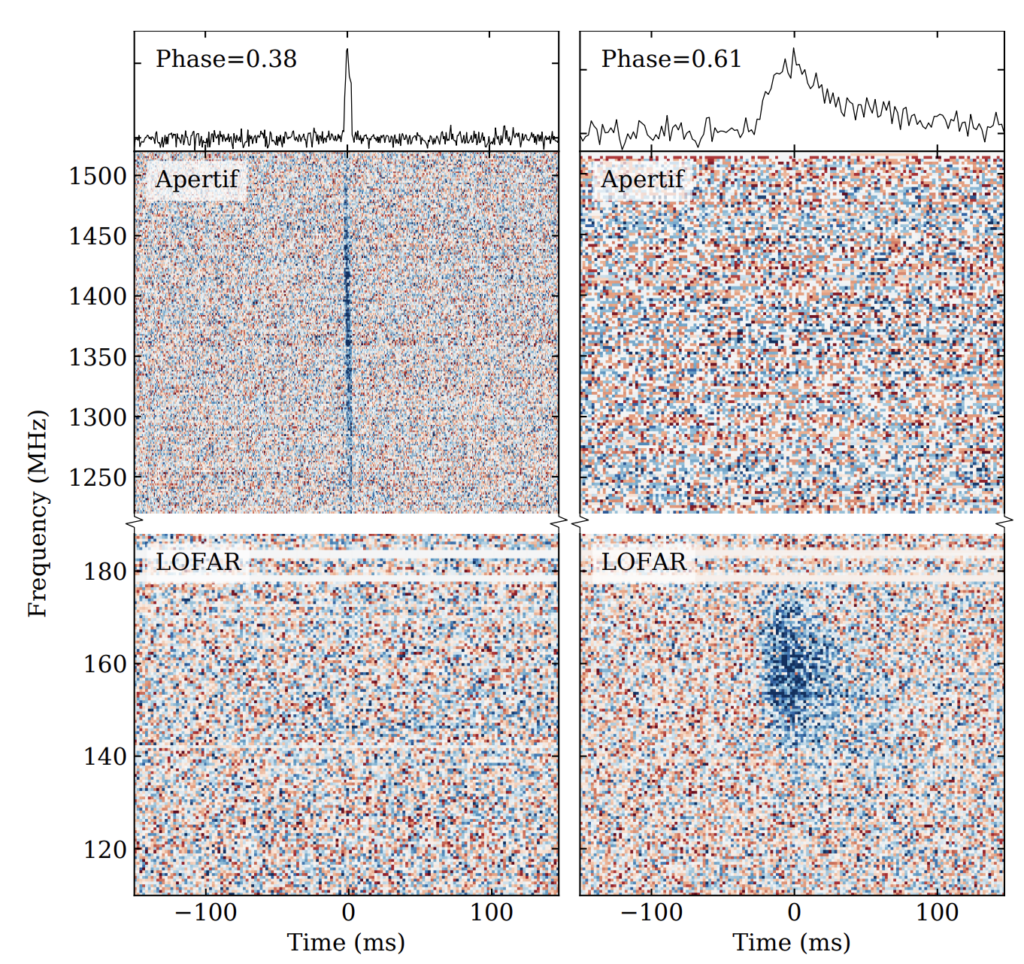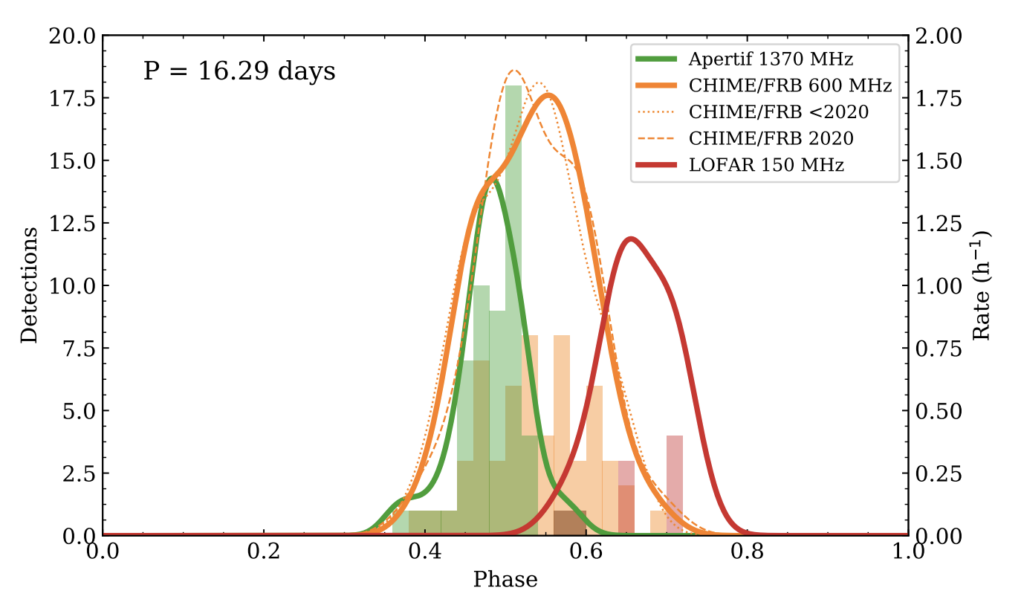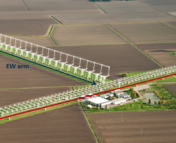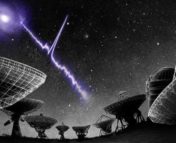Title: Chromatic periodic activity down to 120 MHz in a Fast Radio Burst
Authors: Inés Pastor-Marazuela, Liam Connor, Joeri van Leeuwen, Yogesh Maan, Sander ter Veen, Anna Bilous, Leon Oostrum, Emily Petroff, Samayra Straal, Dany Vohl, Jisk Attema, Oliver M. Boersma, Eric Kooistra, Daniel van der Schuur, Alessio Sclocco, Roy Smits, Elizabeth A. K. Adams, Björn Adebahr, Willem J.G. de Blok, Arthur H. W. M. Coolen, Sieds Damstra, Helga Dénes, Kelley M. Hess, Thijs van der Hulst, Boudewijn Hut, V. Marianna Ivashina, Alexander Kutkin, G. Marcel Loose, Danielle M. Lucero, Ágnes Mika, Vanessa A. Moss, Henk Mulder, Menno J. Norden, Tom Oosterloo, Emanuela Orrú, Mark Ruiter, Stefan J. Wijnholds
First Author’s Institution: Anton Pannekoek Institute, University of Amsterdam, Postbus 94249, 1090 GE Amsterdam, The Netherlands
Status: Submitted, open access on arXiv,
We have learned a lot about fast radio bursts (FRBs) since the first one was discovered in 2007. These enigmatic bursts of radio emission, which are both extremely short, lasting only milliseconds, and extremely energetic, with fluxes of 10s to 100s of Jansky (or a few thousand times brighter than most pulsars), are one of the fastest growing fields in astronomy. While most bursts are one-off events, astronomers have now found not only one, but multiple FRBs that seem to repeat. A few have been localized to host galaxies, and a burst very similar to an FRB has been observed coming from a magnetar in our own Milky Way! New radio telescopes like the Canadian Hydrogen Intensity Mapping Experiment (CHIME) are already observing hundreds of FRBs, and telescopes in development like the Square Kilometer Array (SKA) will see many more!
But there is still so much we don’t know about FRBs, like what causes them (though there are many theories). But the authors of today’s paper have made a discovery that may give clues about the sources of FRBs: the lowest frequency FRB detection to date at 120 MHz. This frequency is almost low enough to tune into it with the FM radio on your car! The FRB in question is FRB 20180916B, which is a repeating FRB known to be active and emit bursts every 16.3 days or so. This low frequency detection is exciting because it can tell us about the environment around whatever is producing the FRB, which may lead to clues about its source.
The low frequency bursts

Since FRB 20180916B is known to repeat, the authors turned two telescopes towards it. One is the Low Frequency Array (LOFAR), which observes at very low radio frequencies, and the other is the Westerbork Synthesis Radio Telescope APERture Tile In Focus (WSRT-APERTIF), which observes at higher radio frequencies where FRB 20180916B has been observed before. The reason for doing this is not only to try to detect these bursts, but also to see if any bursts that are detected are observed at both frequencies at the same time, which would provide clues about the physical process behind the bursts.
Low and behold, the authors detected bursts with both telescopes at both frequencies, but found that they were only seen with one telescope or the other, not both, as shown in Figure 1. Even more interestingly, the low frequency bursts detected with LOFAR were all found within an expected activity window where no higher frequency bursts were detected with APERTIF, as shown in Figure 2. This seems to suggest that whatever mechanism produces the bursts causes them to emit at different frequencies at different times.

What can we learn from these new bursts?

Quite a lot it turns out. The authors split up the times of arrival of the FRB by frequency, comparing when the high frequency APERTIF bursts arrived within the activity window to the LOFAR bursts as well as previously detected bursts from FRB 20180916B with CHIME, which operates from 400-800 MHz, between APERTIF and LOFAR. The histograms of these arrival times, shown in Figure 3, presents an interesting picture, suggesting that higher frequency bursts are emitted earlier in the activity window and lower frequency bursts are emitted later on. What causes this is still unknown, though the authors suggest it could be either the pulses drifting to lower frequencies with time, or some long-scale frequency dependent delay, such as dispersion in pulsars. More low frequency bursts will be necessary to pin this down.
In addition to this apparent frequency drift in time, just the fact that these low frequency bursts were detected at all tells us about the environment around FRB 20180916B. Some FRB models predict a wind or some other dense environment around the source which would absorb this low frequency emission. This detection rules that model out. Additionally, at low frequencies, the interstellar medium, or the gas and dust between us and the burst, can smear out the signal completely, in what is known as pulse scattering, and is visible in the apparent smearing of the right hand burst in Figure 1. But the authors find that the bursts detected by LOFAR are not scattered by much more than we would expect if they had been emitted within the Milky Way. This means the environment around whatever is emitting the bursts that make up FRB 20180916B must be fairly empty, which is in contention with some FRB production models.
What exactly this means about the source of these bursts is not clear yet, but it does rule out most of the current models of what causes the periodic bursts of FRB 20180916B. Clearly there is still much to learn about FRBs, so stay tuned. We are learning new things about them almost everyday!
Astrobite edited by: Jason Hinkle
Featured image credit: Adapted from Figure 2 of the above discussed paper, Pastor-Marazuela, I, et al. 2020




